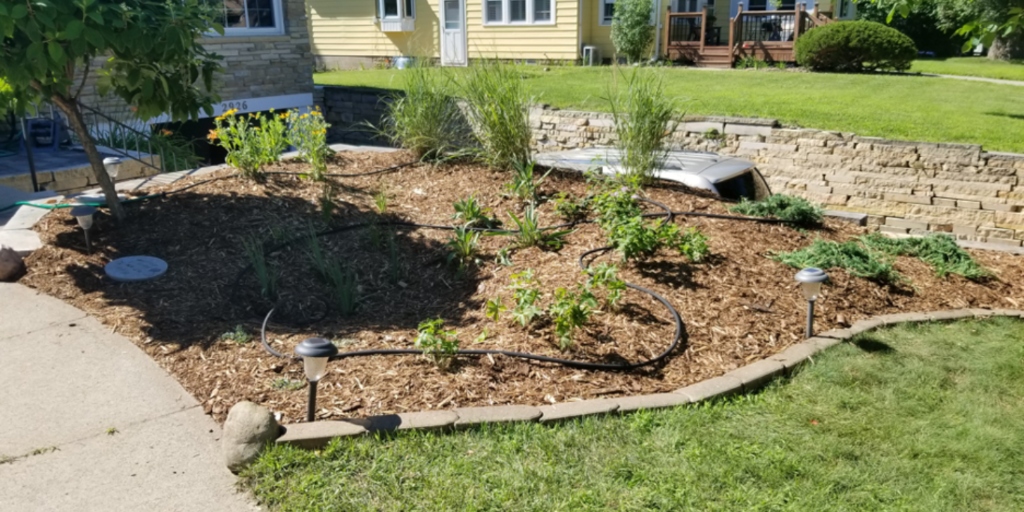A water resource manager was the lead and champion for creating the Rainwater Rewards Program. The City’s small local government naturally fostered a multidisciplinary environment in which nearly every department collaborates with one another to create a program with multiple benefits. The water resource manager advocated for the many benefits of the program including improving water quality and retention, increasing pollinator habitat, and even helping to resolve civil disputes between neighbors concerning flooding and runoff. Being a small government, after the City Council approved and funded the program in 2017, Rainwater Rewards accepted applications that same season.
For residents to participate in the program, their projects must meet one or more of the following goals: 1) protecting and restoring stormwater by capturing pollutants in rainwater, 2) increasing the watershed’s ability to store water, 3) preserving and restoring native plants and wildlife, 4) protecting and preserving groundwater quality and quantity, or 5) increasing awareness of the importance of managing stormwater. Examples of projects funded through the Rainwater Rewards Program include, but are not limited to rain barrels, tree planting, rain gardens, pervious pavement, and green roof installation.
Projects are not funded completely by the program but on a cost-share basis. The percentage of cost-share is determined on specific criteria, including location in the watershed and type of project proposed. Projects started or completed before applications have been approved are not eligible for funding.
How the program works
The City’s Stormwater Management website provides information about the program and eligible projects, contact information for project designers and construction crews, and a simple application form.
After residents have chosen their project, they may select a project designer or contractor to help develop and implement the project, or the resident can complete the project themselves. The City does not recommend specific individuals or companies, but they provide a list of questions or topic to consider when looking for one. The City also provides information on the Blue Thumb website, which is a public/private partnership that promotes raingardens, runoff reduction, native plants and improved water quality. Other partners include local governmental units (watershed districts, conservation districts, cities and counties), non-profit organizations, and private companies such as nurseries and landscape design and build companies.
When choosing a designer or contractor residents should consider several things, including stormwater project design experience and familiarity with local regulations. During project design, the City recommends that residents have a qualified designer or engineer perform a detailed site review to assess applicable permits, drainage characteristics and more. After the site review is completed and plans are finalized, residents complete a form with the final project design plans. The City then reviews the projects for effectiveness in managing stormwater runoff, feasibility, overall design characteristics and eligibility for funds, and permit requirement.
Next, the City meets with residents to agree upon project funding and the requirements of the maintenance agreement, and then residents may begin project construction. Agreements are tailored specifically for each project and typically includes a five-year maintenance plan, schedule, and inspection plan. After final inspection and completion of the maintenance agreement, reimbursement will be given to residents according to previously agreed upon project characteristics.



